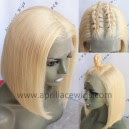In recent years, the concept of "Beauty Ninja" has emerged as a popular approach to achieving a flawless complexion and healthy body. Specializing in high-end boutique products, their passion is discovering and sharing hidden skincare gems that are not yet available in the global market. We will look at Beauty Ninja and its savvy approach to skincare and cosmetics.
Beauty Ninja‘s Approach
The term "ninja" conjures up images of stealth and agility, and that's exactly what the Beauty Ninja approach aims to achieve. This holistic approach to beauty combines healthy lifestyle habits, targeted skincare routines, and savvy makeup techniques to help you achieve a radiant, youthful glow.
Healthy Lifestyle
One of the key benefits of the Beauty Ninja approach is that it emphasizes a healthy lifestyle. This means getting plenty of sleep, drinking lots of water, and eating a diet rich in fruits, vegetables, and lean protein. When your body is nourished and well-rested, your skin will naturally look more vibrant and healthy. The Beauty Ninja approach also emphasizes the importance of exercise, which not only helps to keep your body in shape but also promotes healthy circulation and reduces stress.
Focuses on Targeted Routines

Some Products and Details
Cleansers: A gentle cleanser is a crucial step in any skincare routine, as it helps to remove dirt, oil, and makeup without stripping the skin of its natural oils.
Serums: Serums are lightweight formulas that are designed to penetrate deep into the skin and deliver active ingredients, such as hyaluronic acid, vitamin C, or retinol. These ingredients can help to hydrate the skin, reduce fine lines and wrinkles, and promote a more even skin tone.
Moisturizers: A good moisturizer helps to keep the skin hydrated and protected from environmental stressors. Look for formulas that are rich in antioxidants, such as green tea or vitamin E, to help protect the skin from damage.
Sunscreen: Sunscreen is a crucial step in any skincare routine, as it helps to protect the skin from damaging UV rays that can cause premature aging, hyperpigmentation, and even skin cancer.
Makeup: Beauty Ninja makeup products are typically focused on enhancing natural beauty and promoting a natural, radiant look. This might include tinted moisturizers, lip stains, and cream blushes that blend seamlessly into the skin.
Focus on Healthy Habits
By focusing on healthy lifestyle habits, targeted skincare, and savvy makeup techniques, you can achieve a radiant complexion and healthy body from the inside out. Additionally, the Beauty Ninja approach emphasizes self-care and mindfulness, which can be a great way to reduce stress and boost your overall well-being. Overall, Beauty Ninja products are typically focused on promoting healthy, radiant skin through a combination of targeted ingredients and mindful application techniques.
In conclusion, the Beauty Ninja approach to beauty is a holistic approach that emphasizes healthy lifestyle habits, targeted skincare routines, and savvy makeup techniques. By following this approach, you can achieve a natural, youthful glow and promote overall health and wellness. So why not give it a try and become a Beauty Ninja yourself?
















.gif)



























